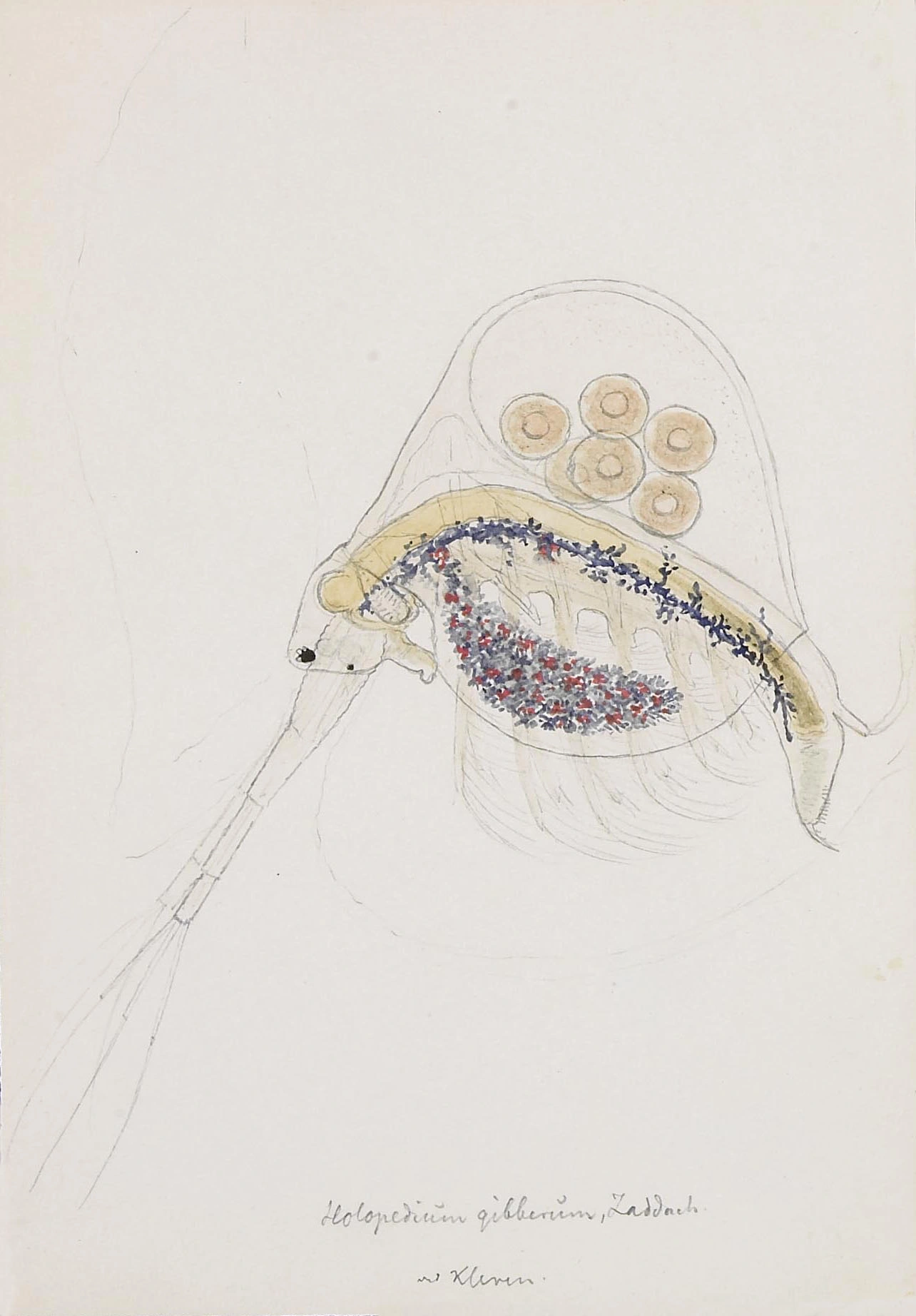Holopedium gibberum
Holopedium gibberum, which is one of the most common crustaceans in Norway, is easily recognized from other crustaceans being the only species that has a gelatinous sheath that always covers the animal. It is found everywhere except in alkali water.
Key characteristics
Holopedium gibberum (female)
Holopedium gibberum is different and easily recognized from other crustaceans being the only species that has a gelatinous sheath that always covers the animal. Its carapace is extremely compressed laterally, and covers only the brood chamber. The head is relatively small and without rostrum. The first pair of antennae are small and wear six small sensory bristles. The second pair of antennae is long and strong and attached to the head. The postabdomen, which wears small denticles, is hidden by the carapace. Normally the animal is transparent, but when food conditions are good, the carapace can have red or blue spots.
Female: Length 1.0–2.5 mm
Male: Length 0.5–1.5 mm
Ecology and distribution
H. gibberum has been found in 62 % of the localities, and among species found in the zooplankton, it is only Bosmina longispina which is more common. It is distributed in all parts of the country and occurs with high frequency at all altitudes (1–1501 m a.s.l.). H. gibberum occurs with lower frequency in ditches and small ponds than in lakes, and is most common when pH<7.5 and the contents of electrolytes are not too high (<8 mS/m). The species is not found in alkali water (Ca>30 mg/l).
| Vitenskapelig navn | < 4,5 | 4,5 - 4,9 | 5,0 - 5,4 | 5,5 - 5,9 | 6,0 - 6,4 | 6,5 - 7,0 | 7,0 - 7,4 | > 7,5 |
|---|---|---|---|---|---|---|---|---|
| 60,4 | 50,5 | 56,9 | 77,1 | 78,8 | 64,6 | 61,7 | 19,1 |
| Vitenskapelig navn | < 1,0 | 1,0 - 1,4 | 1,5 - 1,9 | 2,0 - 2,9 | 3,0 - 3,9 | 4,0 - 4,9 | 5,0 - 6,9 | 7,0 - 9,9 | > 10,0 |
|---|---|---|---|---|---|---|---|---|---|
| 58,6 | 65 | 62,9 | 78,2 | 73,3 | 80,5 | 69 | 38 | 22,7 |
| Vitenskapelig navn | < 0,01 | 0,01 - 0,09 | 0,1 - 0,9 | 1,0 - 9,9 | 10,0 - 99 | 100 - 999 | > 1000 |
|---|---|---|---|---|---|---|---|
| 0 | 18,4 | 34,2 | 53 | 68,6 | 75 | 79,6 |
| Vitenskapelig navn | < 100 | 100-299 | 300-499 | 500-699 | 700-999 | >1000 |
|---|---|---|---|---|---|---|
| 58,5 | 58,9 | 73,8 | 74 | 68,6 | 41,6 |
